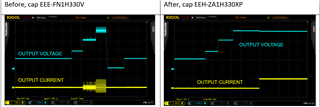Tool/software:
Hello,
We need your help with a problem on a USB C PD. We're using TPS25762-Q1. We started with the associated demo board, then made the circuit on our own boards.
Operation is validated at room temperature, but we're encountering malfunctions between -15°c and -20°c. I can share the schematic by e-mail if required.
The load is a BK PRECISION 8502 dynamic load (outside the oven)
The adapter is a Joy-it COM-ZY12PDN-ST (outside the oven)
The power supply is an ARRAY 3644A set at 15Vdc, current limited to 5A (outside the oven)
Here are the various readings I took:
- OUTPUT 5V 1A
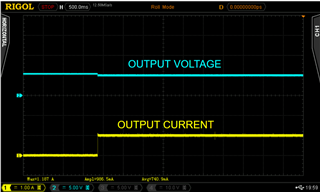
No malfunction observed. The voltage drop observed depends on the cables used during our installation.
- OUTPUT 9V 1A
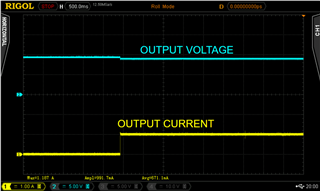
Same as 5V results
- OUTPUT 15V 1A
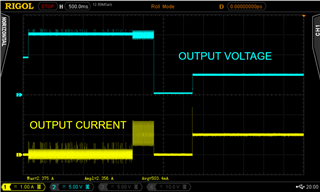
When 15V is activated, noise appears on the output. When the dynamic load is activated, the noise is intensified and the output voltage is shutdown after 500ms. The system then restarts automatically, by default at 5V.
- OUTPUT 20V 0A
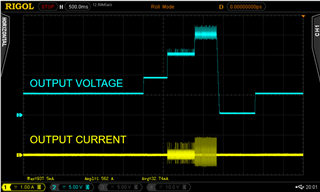
The same malfunction is observed when switching to 20V, the noise is intense and shutdown the system after 500ms.
- OUTPUT 20V 1A
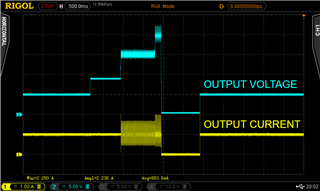
Same operation with load set to 1A. System shutdown.
- INPUT vs OUTPUT
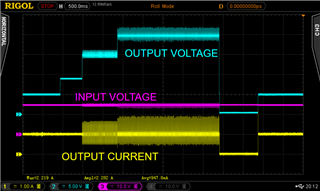
This operation leads me to believe that it's the “boost” part that's causing the problem. Do you have any information about low-temperature operation in relation to the inductor used?
Do you have any idea of the representative 500ms delay before shutdown?
Thank you.


